Opinion & Analysis
Where does the golf ball go from here?
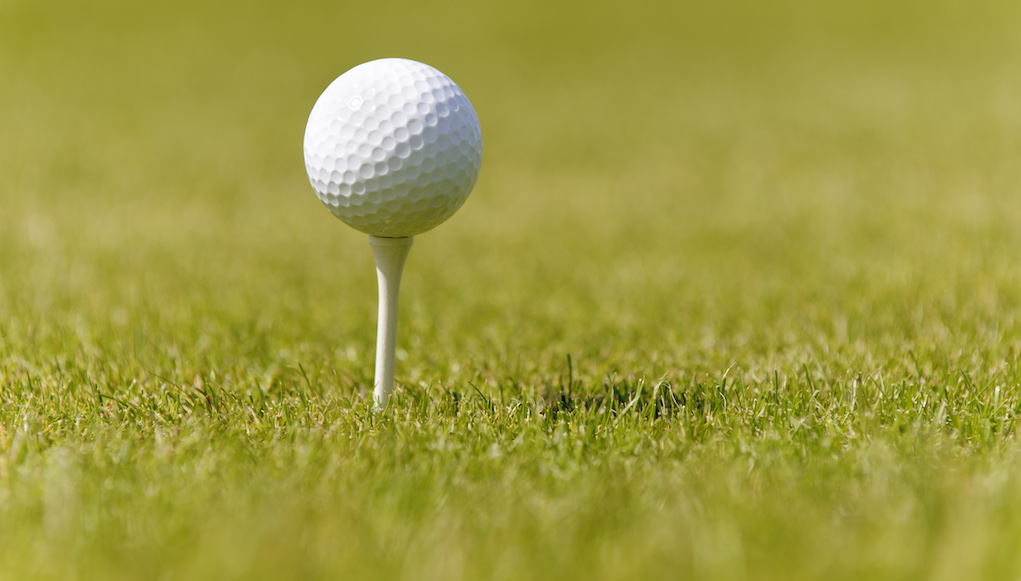
According to an unusual statistic I came across recently there are 2,378 golf balls in the air during any given second around the world. Or to extend that out, it equates to 75 billion seconds of golf ball “airtime” per year. So it’s true golf balls play a significant role to golfers.
Right now there’s a lot of buzz in the ball market with big claims being made from a raft of new entrants. New models claim to be longer off the tee and offer more spin from short range while suppling buttery softness and feel. The industry standard premium ball, Titleist’s Pro V1, has consistently led the way in terms of performance since its launch in 2000. Bridgestone, Callaway, Srixon and TaylorMade are also competing at the top end of the market, which is defined at up to $4 per ball.
But imagine getting all that performance at a fraction of that price? Golfers are starting to sit up and take notice. Should Titleist and the other premium golf ball manufacturers be quaking in their corporate boots? And where does golf ball evolution go from here?
Who Makes the Best Golf Balls?
The ideal ball is one that maximizes distance through low spin with the driver, minimizes the effect of wind, stays straight on off-center hits and spins when it hits the green and offer the right feel.
If you ask Tiger Woods what the best golf balls are, he would say Bridgestone (he’s a brand endorser and uses the company’s B330S). Jordan Speith would say Titleist (he uses a ProV1x) and Phil Mickelson would say Callaway (he uses a Chrome Soft). If you ask a 20-handicap golfer the same question, he or she would probably say any number of brands and balls. And it’s not simply an endorsement issue; it comes down to the requirements of the player. In other words, what ball best suits a golfer’s needs in terms of performance… and of course, what’s the price?
It’s kind of like asking who makes the best beer. It’s a topic that sparks ongoing debate in bars all round the world, because everyone has their own favorite. It’s the same with golf balls. Brand loyalty and marketing play a big part in a golfer’s purchasing decision, and improvements in technology have made “the best ball” hard to define.
One thing is for sure, the market is certainly evolving. With the news that Rory McIlroy has chosen to return to Titleist’s Pro V1x golf ball and Bubba Watson will play Volvik’s S4 in pink, we are seeing success by both new and old brands.
Trending Technologies
There is so much technology behind golf balls these days. Polymers and associated materials are advancing at rapid rates, and computer aided design is enabling a better understanding of aerodynamics and performance. Manufacturing is getting more sophisticated and ball-testing technology can optimize the effects of dimples size and shape, spin, attack angles and aerodynamics.
The theory that every player is different is substantiated by Bridgestone, which has invested heavily in its golf-ball testing research and has more than two million swings in its database.
“Getting fitted for your ball is like getting fitted for your driver,” says Adam Rehberg, Bridgestone’s Head of Golf Ball Fitting. “Swing speed, launch angles and spin rates will point you toward a specific ball to optimize your goals. We are very enthusiastic at Bridgestone, as we don’t just make one ball. We are constantly pushing boundaries, and being part of a conglomerate, Bridgestone Golf balls has access to a ton of R&D from Bridgestone Tires. Polymers being used on tires today will undoubtedly be put into play by Bridgestone Golf.”
One Ball for One Swing?
According to Bridgestone’s swing database research, we are all different and swing a golf club differently.
“We gather real golfer data, not just generated from a robot,” Rehberg says. “We realize that people will not hit the ball perfectly. They will have different swing speeds, attack angles and face angles. Golfers should play a profile of ball that meets their needs that will optimize their performance, be that a slower swing speed or better feel round the green.”
But this tee-to-green strategy is different from Titleist’s recent advertising campaigns that say either its Pro V1 or Pro V1x will be the best-performing Titleist golf ball for golfers whatever their level of play.
Titleist takes a green-to-tee approach in its golf ball development and fitting, which involves an evaluation of all shots on the golf course. The greatest emphasis is placed on shots into and around the green, because “the golf ball that performs best on these shots is your key to lower scores,” the company says.
“Many golfers are led to believe they should be fit for a golf ball based solely on their driver swing speed,” the company says. “This is a flawed approach. The truth is golfers use a wide range of swing speeds to execute the vast array of shots required in every round. The golf ball must perform with every club, at every speed, on every shot.”
So in theory, a 20-handicap golfer can play exactly the same ball as their golfing idol does. But who is right?
New Players in the Market
In recent years, the golf ball industry has become packed with new entrants and existing companies that have created an ever-expanding array of models. New players like Vice, Snell, MG and Kirkland are offering urethane-covered golf balls at significantly lower prices. Test data and on-course feedback from golfers suggest that the technology gap is narrowing and more direct-to-market channels enable these companies to reduce overheads.
Judging by some social media-generated player feedback and by sales of these new entrants, golfers are buying into the price-performance deal. And then you have companies like Volvik with their new S3/S4 balls available now in different colors, not to mention Callaway’s success with its Chrome Soft Truvis golf balls, which have soccer ball-like graphics and sold so well Callaway struggled to meet demand.
New Ways to Buy Balls
Balls are also more likely to be bought online rather than through a pro shop these days.
“Trends are showing that consumers are more comfortable buying stuff on their mobile devices” said Elliot Mellow, Bridgestone’s Head of Golf Ball Fitting. “We have changed our channel model selling more direct online through our own website and partner websites and anticipate that to grow.”
It’s easy to see how technology can push down golf ball prices. There are already scenarios in the future that see a drone delivering a consignment of balls to the first tee before you play, presumably ordered on your smart phone that day.
The Golf Ball of the Future
So how will the golf ball of the future differ? It took 200 years for the featherie to make it to the guttie. How long will we have to wait for the next generation breakthrough?
Talking to Dean Snell is a fascinating insight into ball technology, history and engineering. He worked at Titleist to develop the Pro V1 and then at TaylorMade to design its Penta golf balls. Now he heads up his own golf ball company, Snell Golf, and is adamant that the ball regulations are so tight now that the distance feature has been maxed out.
“The area to focus in on now is from 150 yards and in,” he said. “And essentially that means spin rates.” And he doesn’t just focus on balls for pro golfers. At TaylorMade, he was behind its Noodle, Burner, RocketBallz and Project (a) golf balls, which were designed to perform for average golfers.
Snell says many golfers are being mis-sold on the concept that they need a lower-compression ball for slower swing speeds, believing that it will give them greater distance.
“Based on a 100 mph swing hitting the ball 250 yards, a low-compression ball will only add about one extra yard of distance compared to a higher compression ball,” he says. “But this tiny pick-up in distance is completely offset with lack of feel and ability to spin the ball on or around the green. In order to get enough backspin, you have to have a big enough contact area and you have to have the cover going into the grooves. A very hard ball, even if it had a soft cover, it wouldn’t be interacting with very many grooves, so you do actually need it to deform a certain amount.”
Bridgestone, on the other hand, is adamant it can help golfers hit the ball farther.
“We have invested a lot of R&D research into aerodynamics,” Elliot says. “Our ‘Dual-Dimple Pattern’ will offer less drag and shallow out the landing angle for more roll-out. We will be introducing a new dimple in 2017 that will also add stability and added forgiveness. In addition, we see next generation advances in the ball core. We are moving to a gradational-compression core technology. This will offer one-piece performance, but act like a dual core. We see this offering significant added distance.”
The ball of the future may also be optically different, be it in color or design. Like Volvik and Callaway, Bridgestone representatives see the value of color in certain ball segments, but they say it less than 5 percent of total sales. But they’re working on something novel as well.
“We are always looking at ways to help the golfer and I have a new optics-driven concept ball sitting in my desk right now that we are very excited about,” Elliot says. “It will be very different than anything else on the market. It is still in the R&D stage and will involve a different manufacturing process, but it could be available on the market in 2017.”
Is It All Just a Load of Balls?
Lots of golfers couldn’t care less about what ball they play, especially if they are at the beginner or less-advanced stage. Given that they will be donating a lot of balls per round to the local wildlife, they want something that delivers price performance. After all, they can hit a TaylorMade just as far into the woods as they can hit a Top Flight. But there are differences in performance between brands and models. How much of it is a placebo effect? We all love our golf brands and are passionate about how much superior they are to the competition… but we say the same about our beer, our cars, our phones and everything else.
To succeed in the golf ball business is all about winning user acceptance and distribution. The barriers to entry have diminished a lot over the last 10 years. If Microsoft or Apple decided to muscle in, it would become very interesting indeed.
So you can wrap yourself up in all the ball technology you want. Heck, I’m a lifelong marketing guy; I know how it all works. But the truth is play the ball you’re most comfortable using, one that matches your skill level, personality and pocket.
Bubba summed it up pretty well in his recent signing with Volvik. “As long as the performance differences are not huge, I can have a lot more fun hitting a pink golf ball, so why not?”
- LIKE181
- LEGIT17
- WOW10
- LOL7
- IDHT2
- FLOP3
- OB4
- SHANK15
Opinion & Analysis
The Wedge Guy: What really makes a wedge work? Part 2

In my last post, I explained the basic performance dynamics of “smash factor” and “gear effect” as they apply to your wedges and your wedge play success. If you missed that post, you can read it here.
At the end of that post, I promised “part 2” of this discussion of what makes a wedge work the way it does. So, let’s dive into the other two components of any wedge – the shaft and the grip.
It’s long been said that the shaft is “the engine of the golf club.” The shaft (and grip) are your only connection to all the technologies that are packed into the head of any golf club, whether it be a driver, fairway, hybrid, iron, wedge or even putter.
And you cannot ignore those two components of your wedges if your goal is optimizing your performance.
I’ve long been an advocate of what I call a “seamless transition” from your irons into your wedges, so that the feel and performance do not disconnect when you choose a gap wedge, for example, instead of your iron-set-matching “P-club.” In today’s golf equipment marketplace, more and more golfers are making the investment of time and money to experience an iron fitting, going through trial and error and launch monitor measuring to get just the right shaft in their irons.
But then so many of those same golfers just go into a store and choose wedges off the retail display, with no similar science involved at all. And that’s why I see so many golfers with a huge disconnect between their custom-fitted irons, often with lighter and/or softer graphite or light steel shafts . . . and their off-the-rack wedges with the stock stiff steel ‘wedge flex’ shaft common to those stock offerings.
If your wedge shafts are significantly heavier and stiffer than the shafts in your irons, it is physically impossible for you to make the same swing. Period.
To quickly improve your wedge play, one of the first things you can do is have your wedges re-shafted with the same or similar shaft that is in your irons.
There’s another side of that shaft weight equation; if you don’t have the forearm and hand strength of a PGA Tour professional, you simply cannot “handle” the same weight shaft that those guys play to master the myriad of ‘touch shots’ around the greens.
Now, let’s move on to the third and other key component of your wedges – the grips. If those are not similar in shape and feel to the grips on your irons, you have another disconnect. Have your grips checked by a qualified golf club professionals to make sure you are in sync there.
The one caveat to that advice is that I am a proponent of a reduced taper in your wedge grips – putting two to four more layers of tape under the lower hand, or selecting one of the many reduced taper grips on the market. That accomplishes two goals for your scoring.
First, it helps reduce overactive hands in your full and near-full wedge swings. Quiet hands are key to good wedge shots.
And secondly, it provides a more consistent feel of the wedge in your hands as you grip down for those shorter and more delicate shots around the greens. And you should always grip down as you get into those touch shots. I call it “getting closer to your work.”
So, if you will spend as much time selecting the shafts and grips for your wedges as you do choosing the brand, model, and loft of them, your scoring range performance will get better.
More from the Wedge Guy
- The Wedge Guy: What really makes a wedge work? Part 1
- The Wedge Guy: The easiest-to-learn golf basic
- The Wedge Guy: Golf mastery begins with your wedge game
- LIKE2
- LEGIT1
- WOW0
- LOL0
- IDHT0
- FLOP0
- OB0
- SHANK1
19th Hole
Vincenzi’s 2024 Wells Fargo Championship betting preview: Tommy Fleetwood ready to finally land maiden PGA Tour title

The PGA Tour season ramps back up this week for another “signature event,” as golf fans look forward to the year’s second major championship next week.
After two weaker-field events in the Zurich Classic and the CJ Cup Byron Nelson, most of the best players in the world will head to historic Quail Hollow for one of the best non-major tournaments of the year.
Last season, Wyndham Clark won the event by four shots.
Quail Hollow is a par-71 measuring 7,521 yards that features Bermudagrass greens. The tree-lined, parkland style course can play quite difficult and features one of the most difficult three-hole stretches in golf known as “The Green Mile,” which makes up holes 16-18: two mammoth par 4s and a 221-yard par 3. All three holes have an average score over par, and water is in play in each of the last five holes on the course.
The field is excellent this week with 68 golfers teeing it up without a cut. All of the golfers who’ve qualified are set to tee it up, with the exception of Scottie Scheffler, who is expecting the birth of his first child.
Past Winners at Quail Hollow
- 2023: Wyndham Clark (-19)
- 2022: Max Homa (-8)
- 2021: Rory McIlroy (-10)
- 2019: Max Homa (-15)
- 2018: Jason Day (-12)
- 2017: Justin Thomas (-8) (PGA Championship)
- 2016: James Hahn (-9)
- 2015: Rory McIlroy (-21)
Key Stats For Quail Hollow
Strokes Gained: Approach
Strokes gained: Approach will be extremely important this week as second shots at Quail Hollow can be very difficult.
Total SG: Approach Over Past 24 Rounds
- Akshay Bhatia (+1.16)
- Tom Hoge (+1.12)
- Corey Conners (+1.01)
- Shane Lowry (+0.93)
- Austin Eckroat (+0.82)
Strokes Gained: Off the Tee
Quail Hollow is a long course on which it is important to play from the fairway. Both distance and accuracy are important, as shorter tee shots will result in approach shots from 200 or more yards. With most of the holes heavily tree lined, errant drives will create some real trouble for the players.
Strokes Gained: Off the Tee Past 24 Rounds:
- Ludvig Aberg (+0.73)
- Rory McIlroy (+0.69)
- Xander Schauffele (+0.62)
- Viktor Hovland (+0.58)
- Chris Kirk (+0.52)
Proximity: 175-200
The 175-200 range is key at Quail Hollow. Players who can hit their long irons well will rise to the top of the leaderboard.
Proximity: 175-200+ over past 24 rounds:
- Cameron Young (28’2″)
- Akshay Bhatia (29’6″)
- Ludvig Aberg (+30’6″)
- Sam Burns (+30’6″)
- Collin Morikawa (+30’9″)
SG: Total on Tom Fazio Designs
Players who thrive on Tom Fazio designs get a bump for me at Quail Hollow this week.
SG: Total on Tom Fazio Designs over past 36 rounds:
- Patrick Cantlay (+2.10)
- Rory McIlroy (+1.95)
- Tommy Fleetwood (+1.68)
- Austin Eckroat (+1.60)
- Will Zalatoris (+1.57)
Strokes Gained: Putting (Bermudagrass)
Strokes Gained: Putting has historically graded out as the most important statistic at Quail Hollow. While it isn’t always predictable, I do want to have it in the model to bump up golfers who prefer to putt on Bermudagrass.
Strokes Gained: Putting (Bermudagrass) Over Past 24 Rounds:
- Taylor Moore (+0.82)
- Nick Dunlap (+.76)
- Wyndham Clark (+.69)
- Emiliano Grillo (+.64)
- Cam Davis (+.61)
Course History
This stat will incorporate players that have played well in the past at Quail Hollow.
Course History over past 36 rounds (per round):
- Rory McIlroy (+2.50)
- Justin Thomas (+1.96)
- Jason Day (+1.92)
- Rickie Fowler (+1.83)
- Viktor Hovland (+1.78)
Wells Fargo Championship Model Rankings
Below, I’ve compiled overall model rankings using a combination of the five key statistical categories previously discussed — SG: Approach (27%), SG: Off the Tee (23%), SG: Total on Fazio designs (12%), Proximity: 175-200 (12%), SG: Putting Bermuda grass (12%), and Course History (14%).
- Wyndham Clark
- Rory McIlroy
- Xander Schauffele
- Shane Lowry
- Hideki Matsuyama
- Viktor Hovland
- Cameron Young
- Austin Eckroat
- Byeong Hun An
- Justin Thomas
2024 Wells Fargo Championship Picks
Tommy Fleetwood +2500 (DraftKings)
I know many out there have Tommy fatigue when it comes to betting, which is completely understandable given his lack of ability to win on the PGA Tour thus far in his career. However, history has shown us that players with Fleetwood’s talent eventually break though, and I believe for Tommy, it’s just a matter of time.
Fleetwood has been excellent on Tom Fazio designs. Over his past 36 rounds, he ranks 3rd in the field in Strokes Gained: Total on Fazio tracks. He’s also been incredibly reliable off the tee this season. He’s gained strokes in the category in eight of his past nine starts, including at The Masters, the PLAYERS and the three “signature events” of the season. Tommy is a golfer built for tougher courses and can grind it out in difficult conditions.
Last year, Fleetwood was the first-round leader at this event, firing a Thursday 65. He finished the event in a tie for 5th place.
For those worried about Fleetwood’s disappointing start his last time out at Harbour Town, he’s bounced back nicely after plenty of poor outings this season. His T7 at the Valero Texas Open was after a MC and T35 in his prior two starts and his win at the Dubai Invitational came after a T47 at the Sentry.
I expect Tommy to bounce back this week and contend at Quail Hollow.
Justin Thomas +3000 (DraftKings)
It’s been a rough couple of years for Justin Thomas, but I don’t believe things are quite as bad as they seem for JT. He got caught in the bad side of the draw at Augusta for last month’s Masters and has gained strokes on approach in seven of his nine starts in 2024.
Thomas may have found something in his most recent start at the RBC Heritage. He finished T5 at a course that he isn’t the best fit for on paper. He also finally got the putter working and ranked 15th in Strokes Gained: Putting for the week.
The two-time PGA champion captured the first of his two major championships at Quail Hollow back in 2017, and some good vibes from the course may be enough to get JT out of his slump.
Thomas hasn’t won an event in just about two years. However, I still believe that will change soon as he’s been one of the most prolific winners throughout his PGA Tour career. Since 2015, he has 15 PGA Tour wins.
Course history is pretty sticky at Quail Hollow, with players who like the course playing well there on a regular basis. In addition to JT’s PGA Championship win in 2017, he went 4-1 at the 2022 Presidents Cup and finished T14 at the event last year despite being in poor form. Thomas can return as one of the top players on the PGA Tour with a win at a “signature event” this week.
Cameron Young +3500 (DraftKings)
For many golf bettors, it’s been frustrating backing Cam Young this season. His talent is undeniable, and one of the best and most consistent performers on the PGA Tour. He just hasn’t broken through with a victory yet. Quail Hollow has been a great place for elite players to get their first victory. Rory McIlroy, Anthony Kim, Rickie Fowler and Wyndham Clark all notched their first PGA Tour win at Quail.
Throughout Cam Young’s career, he has thrived at tougher courses with strong fields. This season, he finished T16 at Riviera and T9 at Augusta National, demonstrating his preference of a tough test. His ability to hit the ball long and straight off the tee make him an ideal fit for Quail Hollow, despite playing pretty poorly his first time out in 2023 (T59). Young should be comfortable playing in the region as he played his college golf at Wake Forest, which is about an hour’s drive from Quail Hollow.
The 26-year-old has played well at Tom Fazio designs in the past and ranks 8th in the field in Strokes Gained: Total on those courses in his last 36 rounds. Perhaps most importantly, this season, Young is the best player on the PGA Tour in terms of proximity from 175-200 in the fairway, which is where a plurality and many crucial shots will come from this week.
Young is an elite talent and Quail Hollow has been kind to players of his ilk who’ve yet to win on Tour.
Byeong Hun An +5000 (FanDuel)
Byeong Hun An missed some opportunities last weekend at the CJ Cup Byron Nelson. He finished T4 and played some outstanding golf, but a couple of missed short putts prevented him from getting to the winning score of -23. Despite not getting the win, it’s hard to view An’s performance as anything other than an overwhelming success. It was An’s fourth top-ten finish of the season.
Last week, An gained 6.5 strokes ball striking, which was 7th in the field. He also ranked 12th for Strokes Gained: Approach and 13th for Strokes Gained: Off the Tee. The South Korean has been hitting the ball so well from tee to green all season long and he now heads to a golf course that should reward his precision.
An’s driver and long irons are absolute weapons. At Quail Hollow, players will see plenty of approach shots from the 175-200 range as well as some from 200+. In his past 24 rounds, Ben ranks 3rd in the field in proximity from 175-200 and 12th in proximity from 200+. Playing in an event that will not end up being a “birdie” fest should help An, who can separate from the field with his strong tee to green play. The putter may not always cooperate but getting to -15 is much easier than getting to -23 for elite ball strikers who tend to struggle on the greens.
Winning a “signature event” feels like a tall task for An this week with so many elite players in the field. However, he’s finished T16 at the Genesis Invitational, T16 at The Masters and T8 at the Arnold Palmer Invitational. The 32-year-old’s game has improved drastically this season and I believe he’s ready to get the biggest win of his career.
- LIKE8
- LEGIT4
- WOW1
- LOL1
- IDHT0
- FLOP0
- OB0
- SHANK1
19th Hole
Vincenzi’s LIV Golf Singapore betting preview: Course specialist ready to thrive once again

After another strong showing in Australia, LIV Golf will head to Sentosa Golf Club in Singapore looking to build off of what was undoubtedly their best event to date.
Sentosa Golf Club sits on the southern tip of Singapore and is one of the most beautiful courses in the world. The course is more than just incredible scenically; it was also rated 55th in Golf Digest’s top-100 courses in 2022-2023 and has been consistently regarded as one of the best courses in Asia. Prior to being part of the LIV rotation, the course hosted the Singapore Open every year since 2005.
Sentosa Golf Club is a par 71 measuring 7,406 yards. The course will require precise ball striking and some length off the tee. It’s possible to go low due to the pristine conditions, but there are also plenty of hazards and difficult spots on the course that can bring double bogey into play in a hurry. The Bermudagrass greens are perfectly manicured, and the course has spent millions on the sub-air system to keep the greens rolling fast. I spoke to Asian Tour player, Travis Smyth, who described the greens as “the best [he’s] ever played.”
Davis Love III, who competed in a Singapore Open in 2019, also gushed over the condition of the golf course.
“I love the greens. They are fabulous,” the 21-time PGA Tour winner said.
Love III also spoke about other aspects of the golf course.
“The greens are great; the fairways are perfect. It is a wonderful course, and it’s tricky off the tee.”
“It’s a long golf course, and you get some long iron shots. It takes somebody hitting it great to hit every green even though they are big.”
As Love III said, the course can be difficult off the tee due to the length of the course and the trouble looming around every corner. It will take a terrific ball striking week to win at Sentosa Golf Club.
In his pre-tournament press conference last season, Phil Mickelson echoed many of the same sentiments.
“To play Sentosa effectively, you’re going to have a lot of shots from 160 to 210, a lot of full 6-, 7-, 8-iron shots, and you need to hit those really well and you need to drive the ball well.”
Golfers who excel from tee to green and can dial in their longer irons will have a massive advantage this week.
Stat Leaders at LIV Golf Adelaide:
Fairways Hit
1.) Louis Oosthuizen
2.) Anirban Lahiri
3.) Jon Rahm
4.) Brendan Steele
5.) Cameron Tringale
Greens in Regulation
1.) Brooks Koepka
2.) Brendan Steele
3.) Dean Burmester
4.) Cameron Tringale
5.) Anirban Lahiri
Birdies Made
1.) Brendan Steele
2.) Dean Burmester
3.) Thomas Pieters
4.) Patrick Reed
5.) Carlos Ortiz
LIV Golf Individual Standings:
1.) Joaquin Niemann
2.) Jon Rahm
3.) Dean Burmester
4.) Louis Oosthuizen
5.) Abraham Ancer
LIV Golf Team Standings:
1.) Crushers
2.) Legion XIII
3.) Torque
4.) Stinger GC
5.) Ripper GC
LIV Golf Singapore Picks
Sergio Garcia +3000 (DraftKings)
Sergio Garcia is no stranger to Sentosa Golf Club. The Spaniard won the Singapore Open in 2018 by five strokes and lost in a playoff at LIV Singapore last year to scorching hot Talor Gooch. Looking at the course setup, it’s no surprise that a player like Sergio has played incredible golf here. He’s long off the tee and is one of the better long iron players in the world when he’s in form. Garcia is also statistically a much better putter on Bermudagrass than he is on other putting surfaces. He’s putt extremely well on Sentosa’s incredibly pure green complexes.
This season, Garcia has two runner-up finishes, both of them being playoff losses. Both El Camaleon and Doral are courses he’s had success at in his career. The Spaniard is a player who plays well at his tracks, and Sentosa is one of them. I believe Sergio will get himself in the mix this week. Hopefully the third time is a charm in Singapore.
Paul Casey +3300 (FanDuel)
Paul Casey is in the midst of one of his best seasons in the five years or so. The results recently have been up and down, but he’s shown that when he’s on a golf course that suits his game, he’s amongst the contenders.
This season, Casey has finishes of T5 (LIV Las Vegas), T2 (LIV Hong Kong), and a 6th at the Singapore Classic on the DP World Tour. At his best, the Englishman is one of the best long iron players in the world, which makes him a strong fit for Sentosa. Despite being in poor form last season, he was able to fire a Sunday 63, which shows he can low here at the course.
It’s been three years since Casey has won a tournament (Omega Dubai Desert Classic in 2021), but he’s been one of the top players on LIV this season and I think he can get it done at some point this season.
Mito Pereira +5000 (Bet365)
Since Mito Pereira’s unfortunate demise at the 2022 PGA Championship, he’s been extremely inconsistent. However, over the past few months, the Chilean has played well on the International Series as well as his most recent LIV start. Mito finished 8th at LIV Adelaide, which was his best LIV finish this season.
Last year, Pereira finished 5th at LIV Singapore, shooting fantastic rounds of 67-66-66. It makes sense why Mito would like Sentosa, as preeminent ball strikers tend to rise to the challenge of the golf course. He’s a great long iron player who is long and straight off the tee.
Mito has some experience playing in Asia and is one of the most talented players on LIV who’s yet to get in the winner’s circle. I have questions about whether or not he can come through once in contention, but if he gets there, I’m happy to roll the dice.
Andy Ogletree +15000 (DraftKings)
Andy Ogletree is a player I expected to have a strong 2024 but struggled early in his first full season on LIV. After failing to crack the top-25 in any LIV event this year, the former U.S. Amateur champion finally figured things out, finished in a tie for 3rd at LIV Adelaide.
Ogletree should be incredible comfortable playing in Singapore. He won the International Series Qatar last year and finished T3 at the International Series Singapore. The 26-year-old was arguably the best player on the Asian Tour in 2023 and has been fantastic in the continent over the past 18 months.
If Ogletree has indeed found form, he looks to be an amazing value at triple-digit odds.
- LIKE3
- LEGIT3
- WOW1
- LOL2
- IDHT0
- FLOP2
- OB0
- SHANK0
-

 19th Hole2 weeks ago
19th Hole2 weeks agoJustin Thomas on the equipment choice of Scottie Scheffler that he thinks is ‘weird’
-

 19th Hole2 weeks ago
19th Hole2 weeks ago‘Absolutely crazy’ – Major champ lays into Patrick Cantlay over his decision on final hole of RBC Heritage
-

 19th Hole2 weeks ago
19th Hole2 weeks agoLET pro gives detailed financial breakdown of first week on tour…and the net result may shock you
-

 19th Hole2 days ago
19th Hole2 days agoReport: LIV star turns down PGA Championship invite due to ‘personal commitments’
-

 19th Hole1 week ago
19th Hole1 week agoGary Player claims this is what ‘completely ruined’ Tiger Woods’ career
-

 Whats in the Bag2 weeks ago
Whats in the Bag2 weeks agoTeam McIlowry (Rory McIlroy, Shane Lowry) winning WITBs: 2024 Zurich Classic
-

 19th Hole3 weeks ago
19th Hole3 weeks agoTaylorMade signs 15-year-old AJGA Rolex Junior Player of the Year to an NIL contract
-

 Equipment1 week ago
Equipment1 week agoGolf fans left surprised by LIV’s choice of course for its 2024 individual championship event



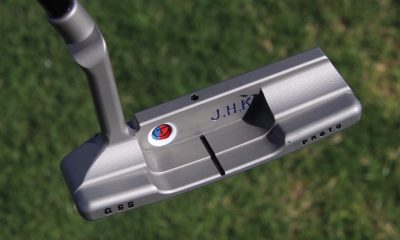



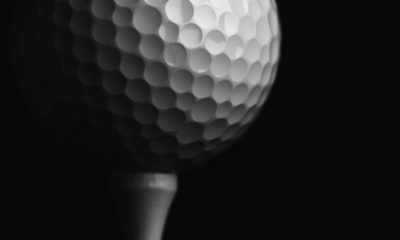

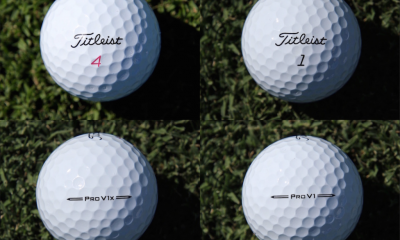

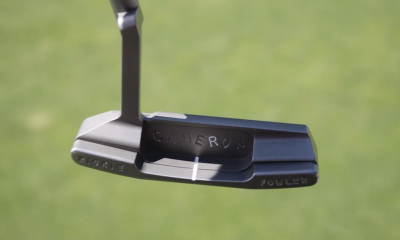

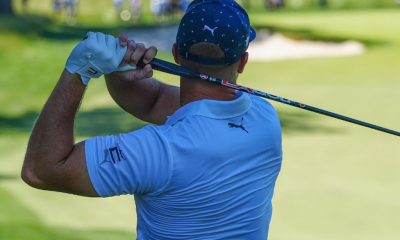















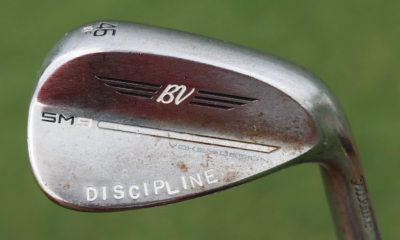

rasel
Oct 2, 2017 at 1:54 am
its a really great idea that you have described here. thanks a lot for this best idea
Joey
Feb 23, 2017 at 2:15 pm
Is it just me or do other people just hate when you are playing with people and they will tell you ball doesn’t matter. I was playing the other day and I bought some b330s golf balls and he was wondering why I bought them instead of Top Flights that are half the price. Does anyone know something smart that i can say back to people who comment on balls that i use?
Miuralovechild
Feb 6, 2017 at 1:20 am
I can’t wait for the Sams Choice ball from Sam’s Club. They won’t let Costco dominate the ball market.
Dan
Feb 12, 2017 at 10:41 pm
more likely it will be an Amazon ball right? I’ve been buying all my golf balls from Amazon for the last year+. It’s only a matter of time before they get the same factory as Costco to make their own “prime” ball.
Eye4Golf-Albuquerque
Feb 1, 2017 at 9:31 pm
I play on city courses 95% of the time and play 3 times a week, so high end premium balls are not a good return on investment. If you play on high end courses you see some improvement if you play to a 6-12 hdcp, higher no help, lower no brainier. Last time I read the average golfer shoots in mid 90’s. I think it’s great to have such a variety of value priced quality balls Snell,Vice, Wilson Staff and others from $12-32 dozen. Duo’s yellow in winter and Kirkland rest of time are my favorites. Finding the right ball is easier and cheaper than golf clubs.
Kyle p
Feb 1, 2017 at 12:05 pm
I’ve read that article countless times with only slight variations over the years with regards to balls and clubs. It comes across as a child writing a report.
I’m asking the editor, please don’t post articles just for the sake of filling up space.
This website has always been knowledgeable and insightful and I hope that resumes in the future.
Stevegp
Feb 1, 2017 at 12:41 am
Interesting summation article. You “use” the golf ball on every shot. The ball you choose is important (IMHO). The golf ball also is the least expensive piece of equipment you purchase and one that can impact every shot, enjoyment of the game, and your performance.
S Hitter
Feb 1, 2017 at 1:28 am
No, the least expensive piece of equipment is the tee that you put your ball on
Jim
Jan 31, 2017 at 5:26 pm
Absolutely time for ‘the official tournament ball’
a barrel full on the range and every player loads their bag with them. Period. Different mfrs can sponsor events and their ‘tour compliant’ ball will be the one used that week.
let the pampered ones cry. They’ll still all have their endorsement deals on the side
george
Jan 31, 2017 at 11:54 am
Well, I’ve still got 10 dz B330-RX in the basement. I guess I’ll have to wait another two months zu select a new and improved ball… 😉
cgasucks
Jan 31, 2017 at 8:30 am
When it comes to buying new tour level quality balls, the KSig gives you the best deal for your hard earned dollars. I will count the days when it will come back (as per their Chairman’s comments).
Tim
Jan 31, 2017 at 6:23 pm
Going a little far calling the KSig a tour level ball…good ball for amateurs yes….you know the Costco ball does not or did not go through all the testing a Prov1 or other tour balls go through right…I think you will find the real threat of the KSig ball is for all the off tour balls all the big boys sell…Who would pay $22 or more for a hard cover ball if you could get a urethane ball for $15 a dozen…that is the real threat
Brian
Jan 31, 2017 at 8:40 pm
Michael Breed, is that you?
Mark
Jan 31, 2017 at 2:42 am
Hopefully more affordable. Kirkland have rocked the boat but you find a lot of golfers who want expensive and would not be seen dead with anything that wasn’t from a premium priced brand. And are off 20 and hit it all over the parish and then spend an inordinate amount of time looking for them. “It’s lost mate, this is where Elephants come to die. Not a chance…these are £3.50 each”….
JuNiOR
Jan 31, 2017 at 12:24 am
Who Makes the Best Golf Balls?
Hands down the Kirkland Signature 4 piece!!!
1. Performance
2. Price
3. Did I say price….$30.00 for 2 DOZEN
Jim
Jan 31, 2017 at 12:39 am
Your talking about an ok ball for the White Tee 15 to 20 handicapper….for a real player, one who makes birdies from the Blue or Back tees the higher end balls are going to be better…why, because the high end balls (Prov1 etc) are built to be and play better…at best with a Kirkland ball your getting a ball with play ability 5 or more years old. Fine for those that just not going to get any better..
Brian
Jan 31, 2017 at 8:43 pm
Is Titleist paying you per post or an hourly rate?
STeve S
Jan 31, 2017 at 8:52 pm
Have you seen the testing? Ksig numbers within experimental error of the 2016 Pro V1. If it’s 5 year old technology that means all the BS about new technology is just that…BS.
SV
Feb 1, 2017 at 9:53 am
A rather snarky comment. Actually a player will do his best with a ball that suits him and they don’t have to be tour level and cost $50 per dozen. Just because someone doesn’t want to pay an exorbitant price for balls doesn’t mean they can’t play. My favorite balls, which unfortunately are no longer available, are the Srixon AD333 and Callaway Diablo HX Tour. By the way, I am 68 years old, play to a 5 handicap and play to it from any set of tees.
MiloTheMarauder
Jan 30, 2017 at 8:33 pm
I’m looking forward to playing the new Chrome soft X, hopefully in Truvis.
Adam
Jan 30, 2017 at 7:01 pm
Hopefully it goes in the hole a lot more and sooner on each hole!
Geoff
Jan 30, 2017 at 1:19 pm
I’ve played the Chromax ball for about 3 years and it simply outperforms other premium balls that I’ve played. They really run out a little more on Drives, approaches and putts. Most players want more distance on their Driver and they often miss greens and putts short. Urethane balls produce more spin of the driver which causes the ball to hook or slice more and stop quickly on a good drive, while the Chromax ball is very straight and picks up a couple of extra yards. On approach shots, the urethane ball will stop and spin back; if most misses are short, you don’t want the ball to spin back. The Chromax ball takes a hop forward and then stops for me. On putts, the urethane ball grips each imperfection on the green and slows down the ball. I hate the putts you leave inches short with the perfect line—that is far less likely to happen with this ball. Pull and hit the same clubs you normally would and hit more greens and hole more putts, it’s really a no-brainer. I’m very happy with the Chromax O.V. ball.
Ian
Jan 31, 2017 at 1:42 pm
who should they make the endorsement check out to?
Geoff
Jan 31, 2017 at 5:39 pm
Ha, me I would think!